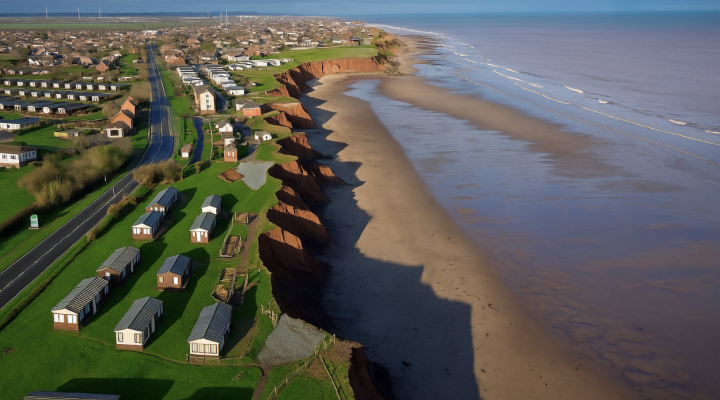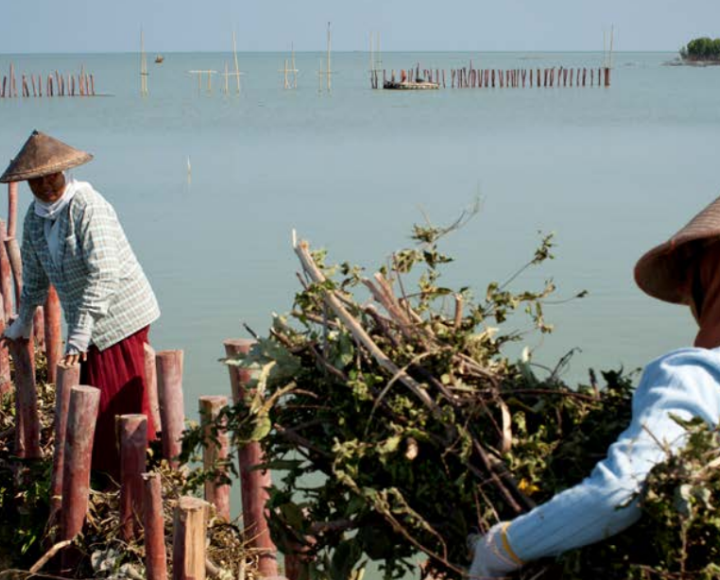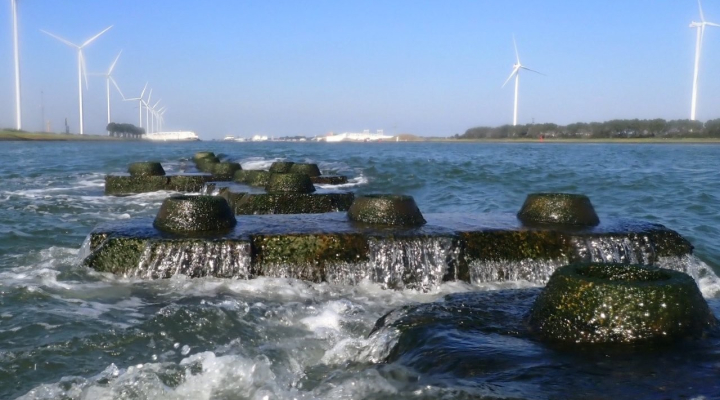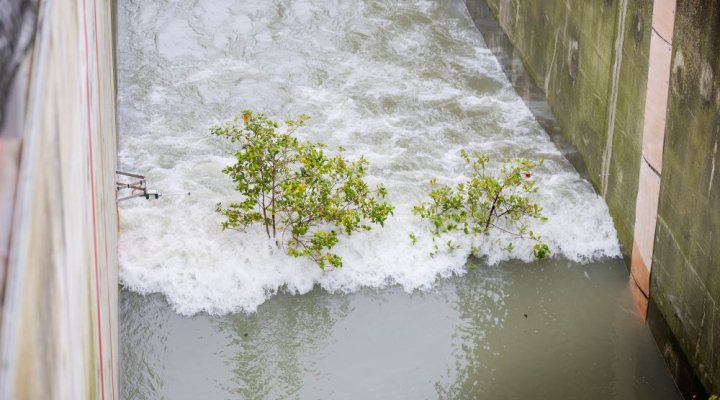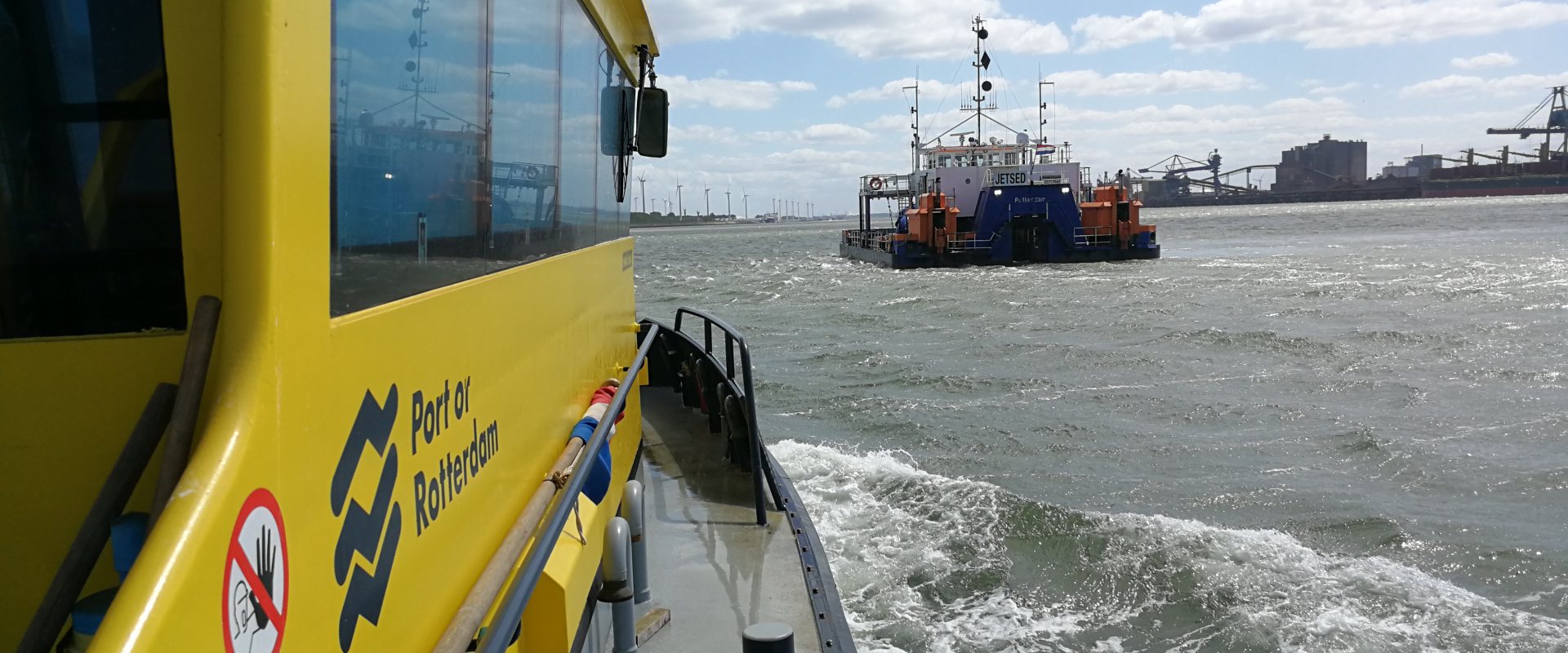
Trials with promising water injection dredging in port of Rotterdam
The Port of Rotterdam Authority is conducting trials with water injection dredging. This dredging technology has the potential to reduce the port’s costs to maintain the required depths. Especially along berths and quay walls.
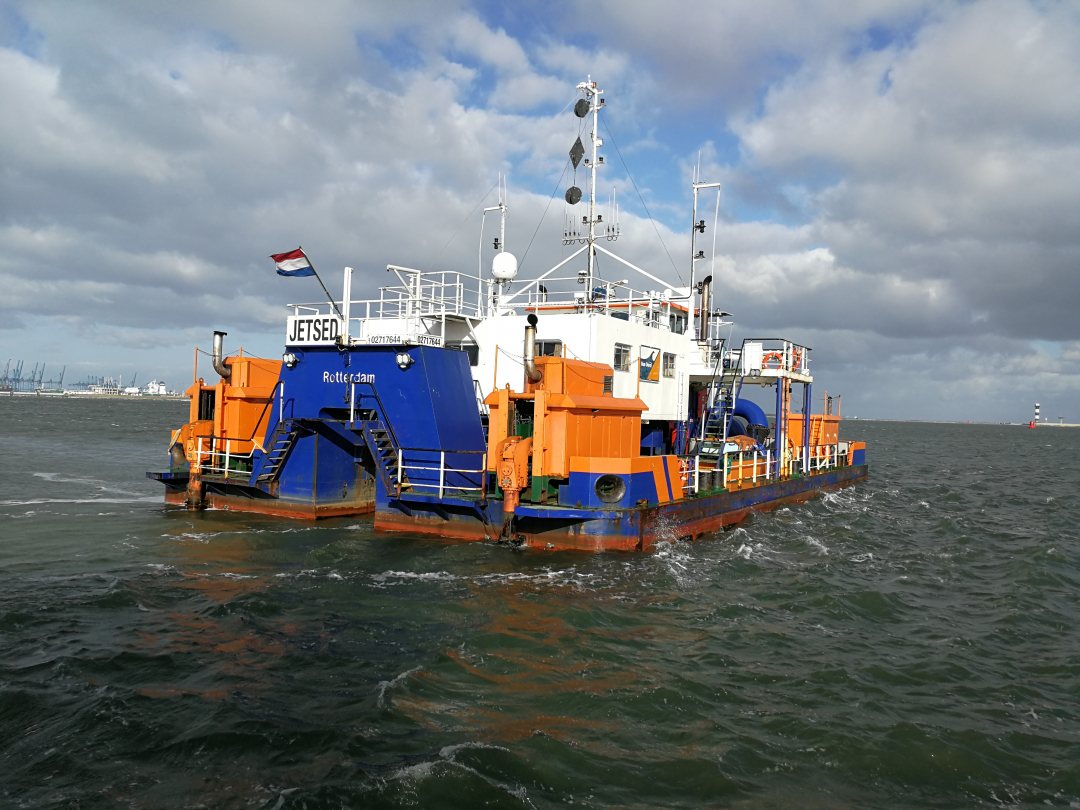

Maintenance dredging
By injection of water in a muddy soil, the excess sediment lifts and starts to flow in a specific direction under the influence of gravity or currents.
The sediment settles at one particular location where it can be removed easily. This reduces the amount of movements, compared to traditional dredging.
Over the past two years, the port of Rotterdam has conducted trials with water injection dredging in one of its channels. Injecting the sediment with water once every 6 to 8 weeks rather than removing it with a trailing suction hopper dredger has cut dredging costs at the site.
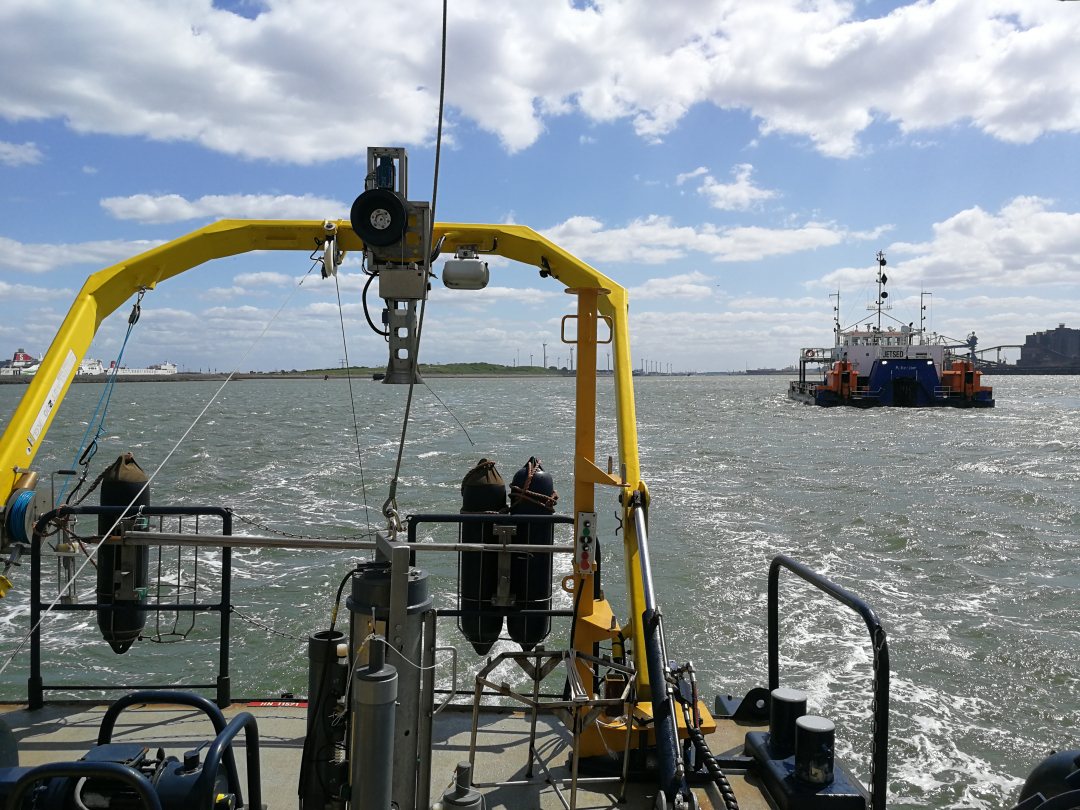

Sediment behaviour
The current trials explore new opportunities within the port’s dredging programme and increase insight into sediment’s specific characteristics and siltation patterns.
Additionally, the performance of two monitoring tools; the GraviProbe (dotOcean) and the RheoTune (Stema Systems) are evaluated. These tools measure the mud strength and density and are typically used to establish mud properties in ports for navigation and dredging purposes.
The study is performed in partnership with various research institutes, including Delft University of Technology, Deltares and Marin.
Every year, the Port of Rotterdam removes some 5 million cubic metres of dredged material from the port basins – equivalent to around 500 football pitches covered with a metre-thick layer of spoil.




